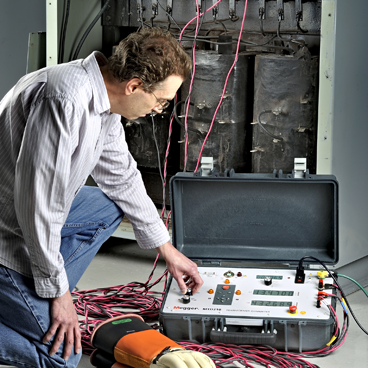

Transformer insulation resistance deterioration is one of the most common causes of transformer failure: a failing transformer is a costly replacement in an electrical system with the potential for a long downtime. If you fail to maintain your transformer with regular insulation resistance testing (as can be carried out by the Megger Transformer Ohmmeter (MTO) series of transformer test equipment) then it’s likely to fail before reaching its maximum operating life.

By measuring a transformer's winding resistance from one HV transformer bushing to another, transformer resistance testing can reveal a great deal of information about the transformer. In addition to the obvious faulted transformer winding (i.e., an open winding or shorted turn), subtler problems can be detected. The DC current, in addition to flowing through the winding, also flows through the off-load ratio adjusting switch (DETC), the on-load ratio adjusting switch (on load tap changer or OLTC), as well as numerous welded and mechanical connections. Hence, the integrity of all these components can be verified with the use of transformer resistance test instruments. Applying DC test current through OLTC switches under transition (tap changes) validates proper make-before-break operation. From experience, it is known that the on load time changer has the greatest risk of misoperation as it operates within a transformer.
Transformer problems or faults occur due to poor design, assembly, handling, environmental damage, overloading or subpar maintenance. Measuring the resistance of the transformer windings ensures that the connections are correct and the resistance measurements indicate that there are no severe mismatches or opens. Most power transformers have taps built into them. These taps allow the ratio to be increased or decreased by fractions of a percent. Ratio changes involve a mechanical movement of a contact from one position to another, and a transformer tap changer test should also be undertaken during the transformer winding resistance test to validate proper operation.



